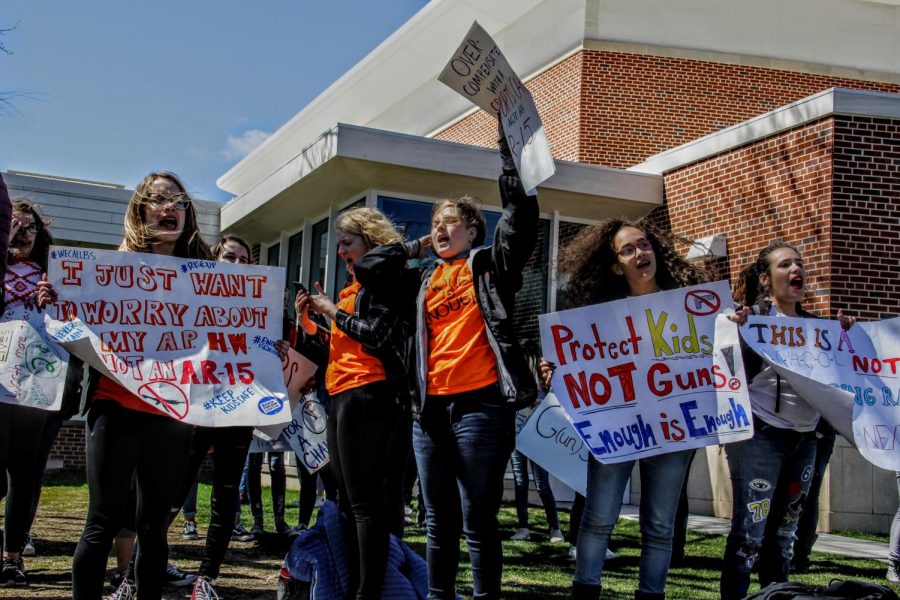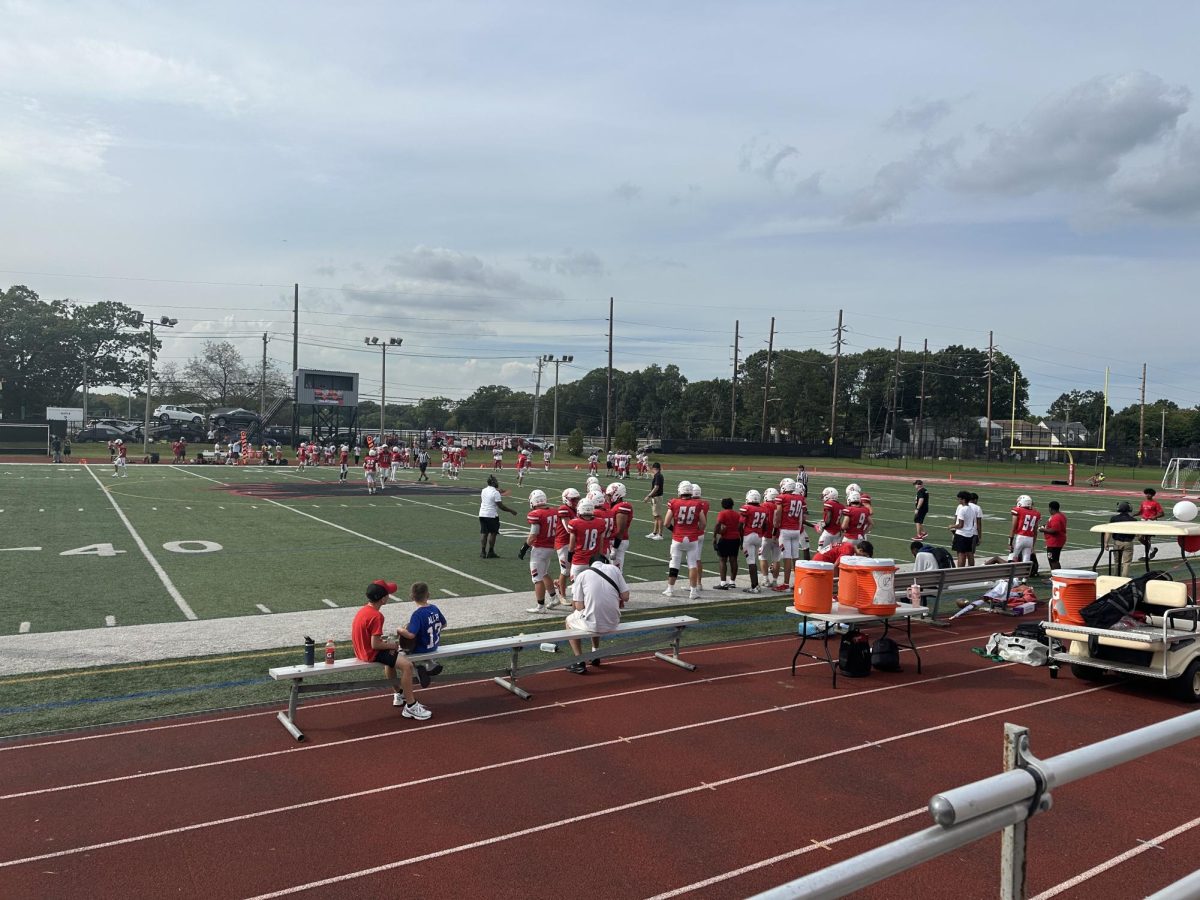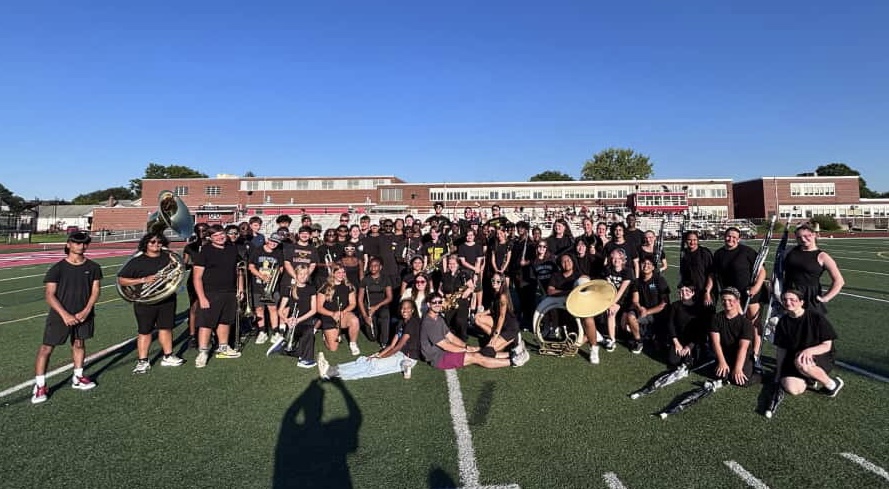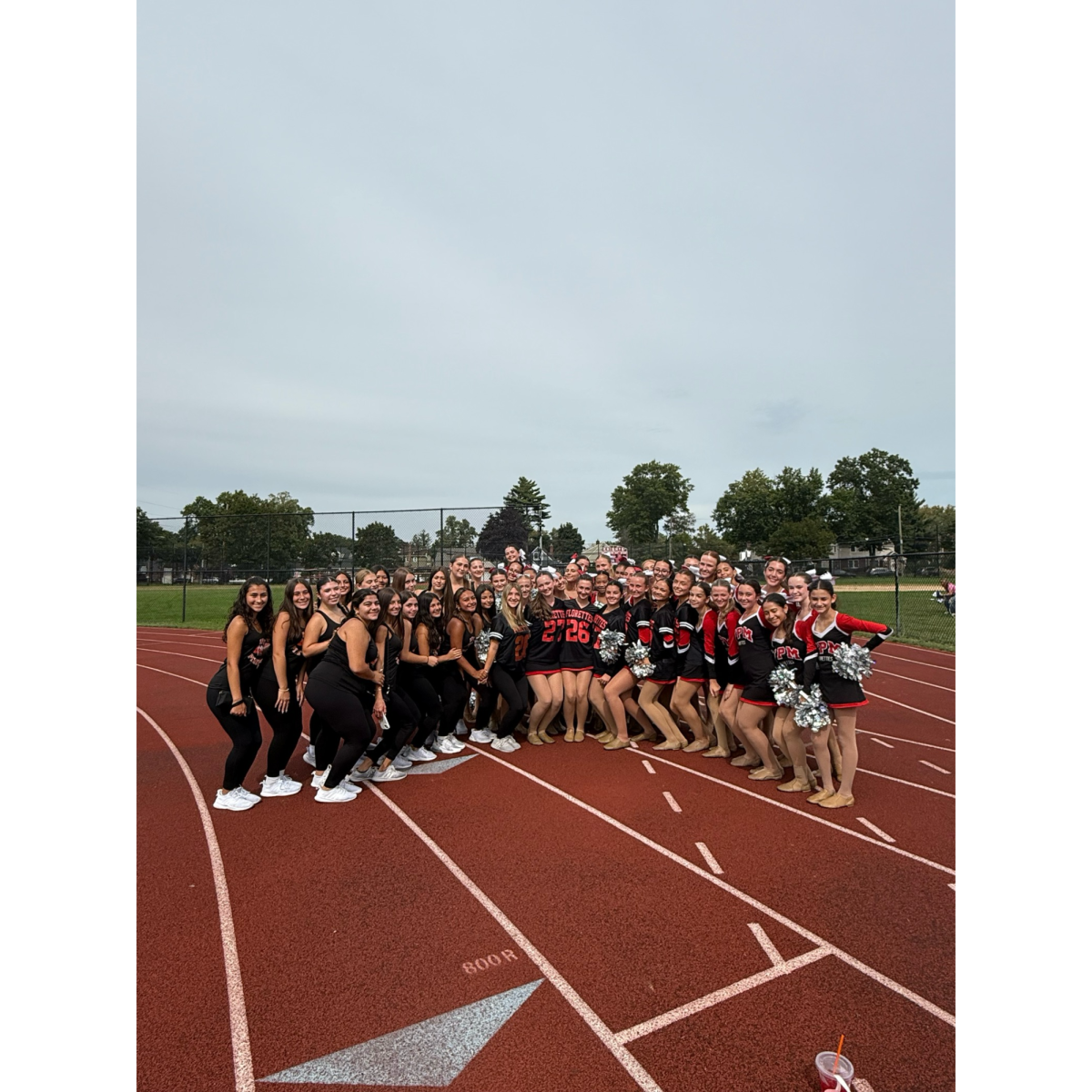Walking Out For A Cause
Following the recent school shooting in Florida, FPM students participate in national protest
May 3, 2018
On Friday, April 20, on the anniversary of the Columbine School Shooting that left 13 people dead, high school students across the nation walked out of thousands of schools in protest of gun violence and the lack of gun regulation. The stated goals of the movement are the banning of AR-15s and high-capacity magazines as well as the implementation of universal background checks and waiting periods. At Floral Park Memorial, over 100 students participated in the event.
The students walked out at 10 a.m. and did not return to class for the rest of the day. They stayed on the field for several hours, during which rousing speeches were heard from dozens of students of varying age, race, and gender. Three “anti-protestors” toting Trump merchandise and a large American flag were allowed to speak and were heard with respect and civility before leaving the field. At 1 p.m., the students left the field and began to march through the town. They wielded signs reading such statements as “Old enough to be killed, old enough to have a say,” “Give Congress common sense again,” and “The 2A is not a suicide pact.” They proudly wore orange, the color of the March For Our Lives movement, which is supposed to represent prison uniforms, as a statement that arming school staff turns schools into prisons. As they marched, they chanted slogans of the movement (“Enough is enough,” “Never again,”) as well as some more colorful ones (“Hey, hey, NRA, how many kids did you kill today?” “Are we next?”). They eventually arrived at Tulip Avenue, where they rallied and continued to chant in the square. After roughly an hour, they marched back to Floral Park Memorial, where they stood outside to chant and bear their signs as students and teachers left the building at the end of the school day.
Students who walked out received cuts in all missed classes but no further rebuke. The events would doubtless have not come to fruition had it not been for the tireless work of the team of student leaders. The students on this team were sophomores Gwynne Smith, Maya Goss, Daniel Karpf, and Harry Schlechter, as well as juniors Andrew Gervasi and Charlotte Goss.
All students who participated across the nation showed a courage and willingness to stand up for what they believe in that is commonly underestimated in youth. Such people and movements could effect change that has been attempted and thwarted for decades.








